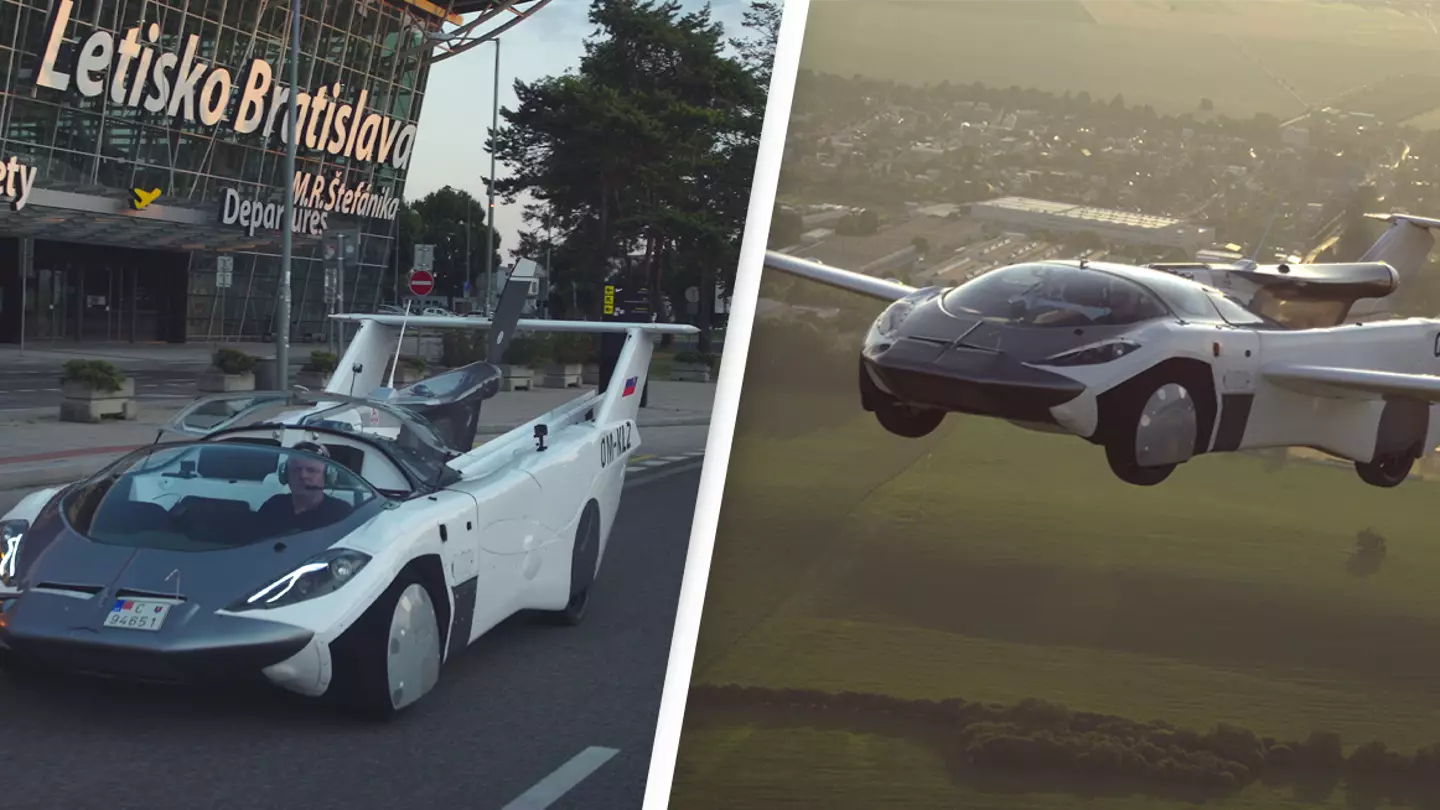
In 1912, when asked to imagine what the world would look like in the 21st century, people had a variety of ideas.
We’d be travelling to the moon for our holidays, they said. Students would learn by having information fed into their brains by wires, and everyone would be using flying taxis.
There’s still a bit of a way to go on those first two, but flying taxis might be here sooner than you realise.
Advert
In fact, for one company, they’ve already arrived.
Klein Vision is behind AirCar, the flying car that made headlines last month when it was officially certified to fly by Slovakia’s Transport Authority.
The car took its maiden flight in 2020, and in June last year became the first flying car to make an inter-city flight, journeying between Nitra and Bratislave in just under half an hour, leading the company’s founders to declare in a video that ‘Science fiction is now reality.’
Advert
‘The car used to be a symbol of freedom 50 years ago when I was a boy,’ says Anton Zajac, the co-founder and main investor for AirCar. ‘People would use the car to liberate them, they could go anywhere almost, but today the car is on jammed freeways, it's becoming a symbol of misery.’
For Zajac, the flying car represents the solution to the ‘prison’ of 21st century travel. ‘AirCar is something that symbolises the return of freedom, because you can avoid those clogged freeways,’ he says. ‘So maybe that’s why people are fascinated.’
‘On the street you have big limitations,’ echoes AirCar inventor Stefan Klein. ‘In Europe we have 130kmh [speed limits] and despite [cars having] engines with 500hp you [don't] have any chance to use this performance. In the air you are absolutely free.’
This fascination with cars that can fly has captivated the human imagination for centuries. Long before Chitty Chitty Bang Bang first took to the skies, inventors were wondering how to create a vehicle that could go from zooming along roads to soaring through the air in a matter of minutes.
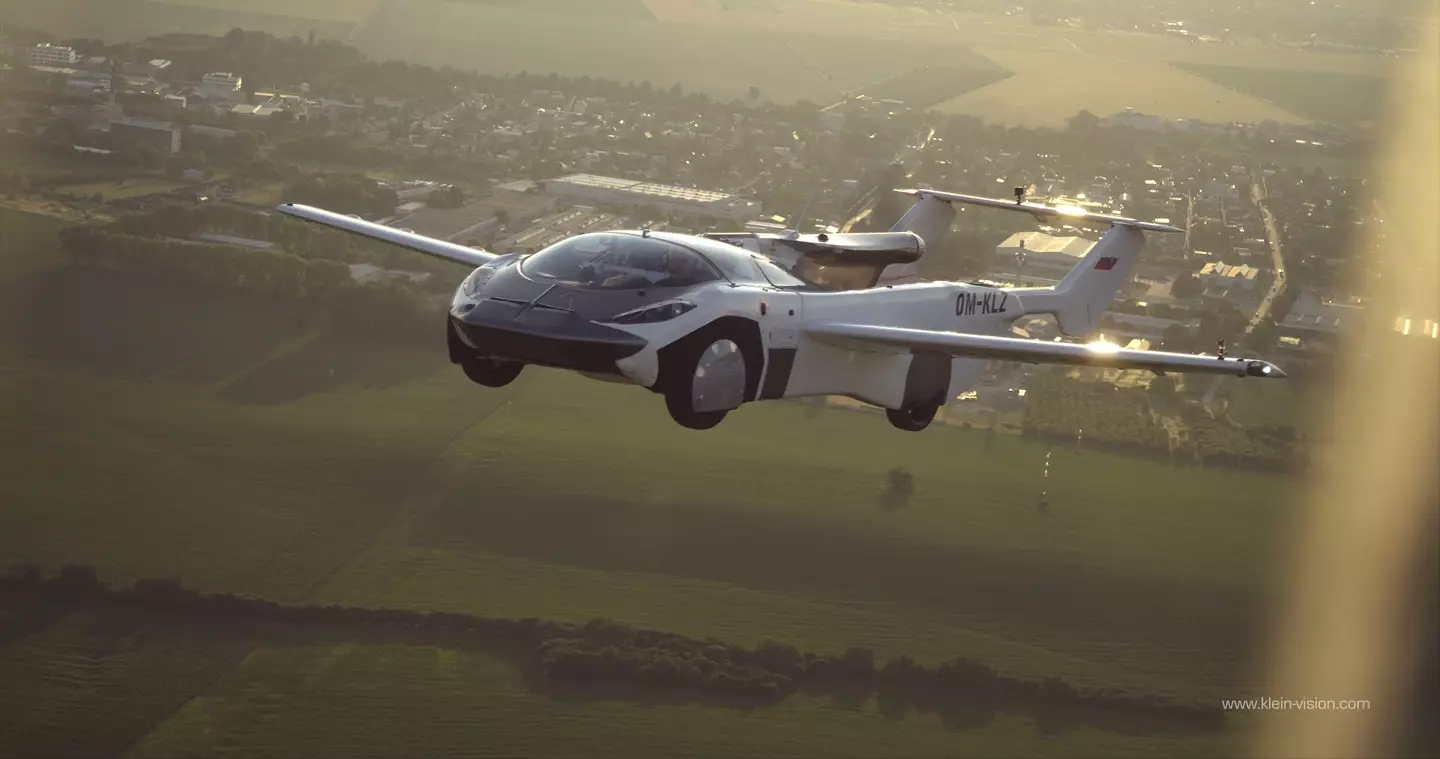
Early theoretical designs for flying cars were found as far back as 1841, when a pair of New York inventors patented designs for an ‘Aerial Steam Carriage.’ But it’s only in the past couple of decades that the idea has moved closer to becoming a reality.
Advert
The project is the result of a lifelong obsession for Klein, who grew up in a family of aviators, often acting as the test pilot for their inventions in his role as the youngest, and therefore smallest of the family.
‘From my childhood we discussed only about planes,’ he tells UNILAD. ‘But it was during socialism, this time was very prohibited, very closed, and we made our first plane as an illegal construction in our garage.’
Klein credits his childhood with spurring on his desire to make flying cars a reality. His first attempt at doing so came with AeroMobil, which promised to deliver the world’s first purchasable flying car by 2023.
After growing disillusioned with the company, Klein left to start Klein Vision, working with a much smaller team and far fewer resources. Then, in 2016, he met Zajac, who came on board as the project’s main inventor.
Advert
Based in Slovakia, Klein Vision is a relative minnow among stiff competition, with mega corporations like Alphabet, Uber and Boeing all working on their own flying taxi prototypes.
So why is it Zajac and Klein that seem closest to actually putting a flying car on the market?
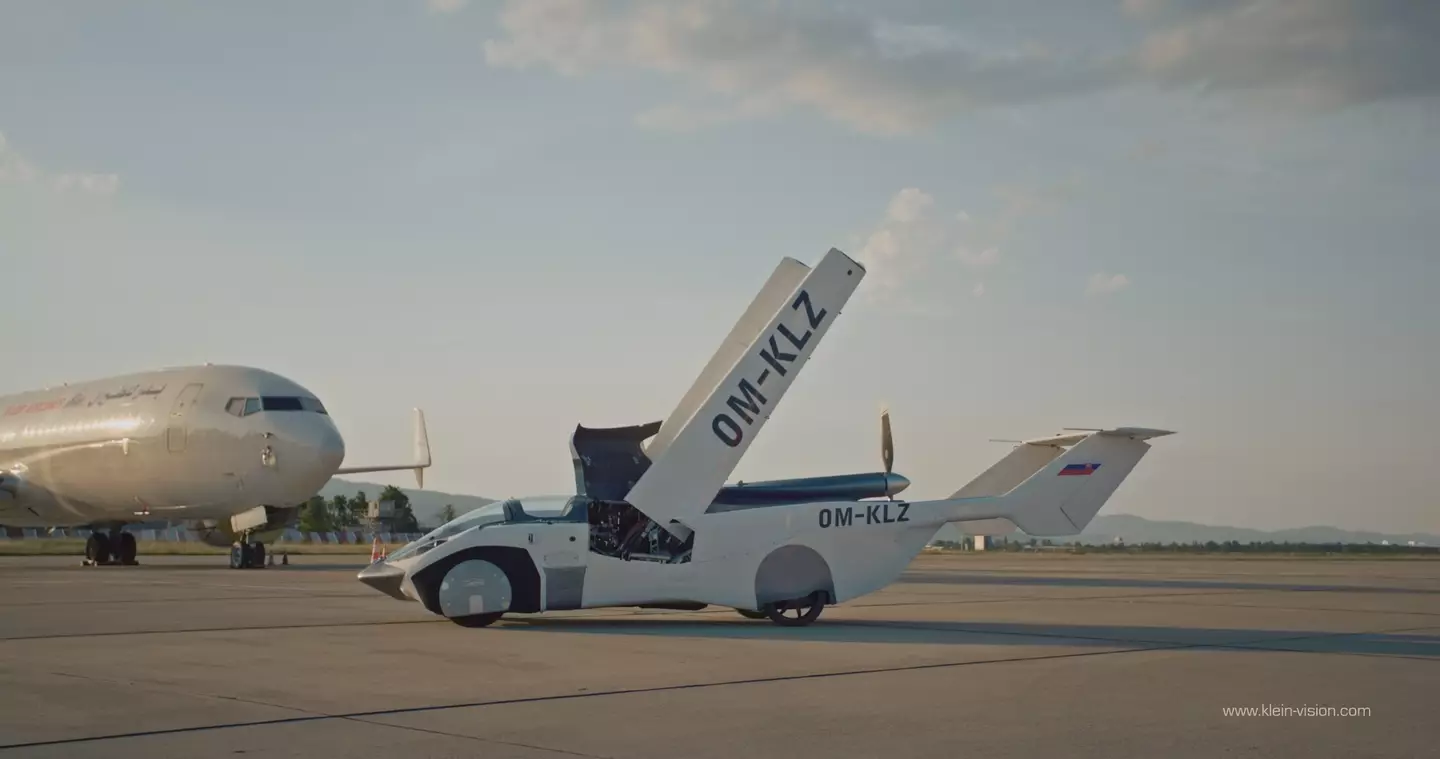
Zajac has a theory; he compares the commitment of Klein to his vision to that of the Wright brothers, who with little in the way of resources or manpower beat the US government to create the world’s first airplane in 1903.
Advert
‘Whenever I work with somebody I'm not investing into [the] idea, I invest in people, I look [at] how dedicated they are, how skilled they are,’ he tells UNILAD. ‘This project would have never happened had it not been for professor Klein's attitude and his constant obsessed dream to create this flying car.’
AirCar’s milestone - an official declaration of airworthiness under EU Aviation Safety Authority standards - came in January following more than 70 hours of flight tests, including 200 take-off and landing procedures.
Looking forward, Zajac says he’s committed to getting the car ready to be made available for people to buy as soon as possible.
He envisions the AirCar as having multiple uses: both as a commercial taxi service capable of intercity and even international travel, and as an alternative to the personal small planes popular among hobby pilots.
‘In the United States alone there's about 220,000 owners of small planes,’ he points out. ‘I own a plane, and I wish I had a flying car, because the advantage of having a car in your garage is incredible. You save a lot of time and hassle and it's just more convenient.’
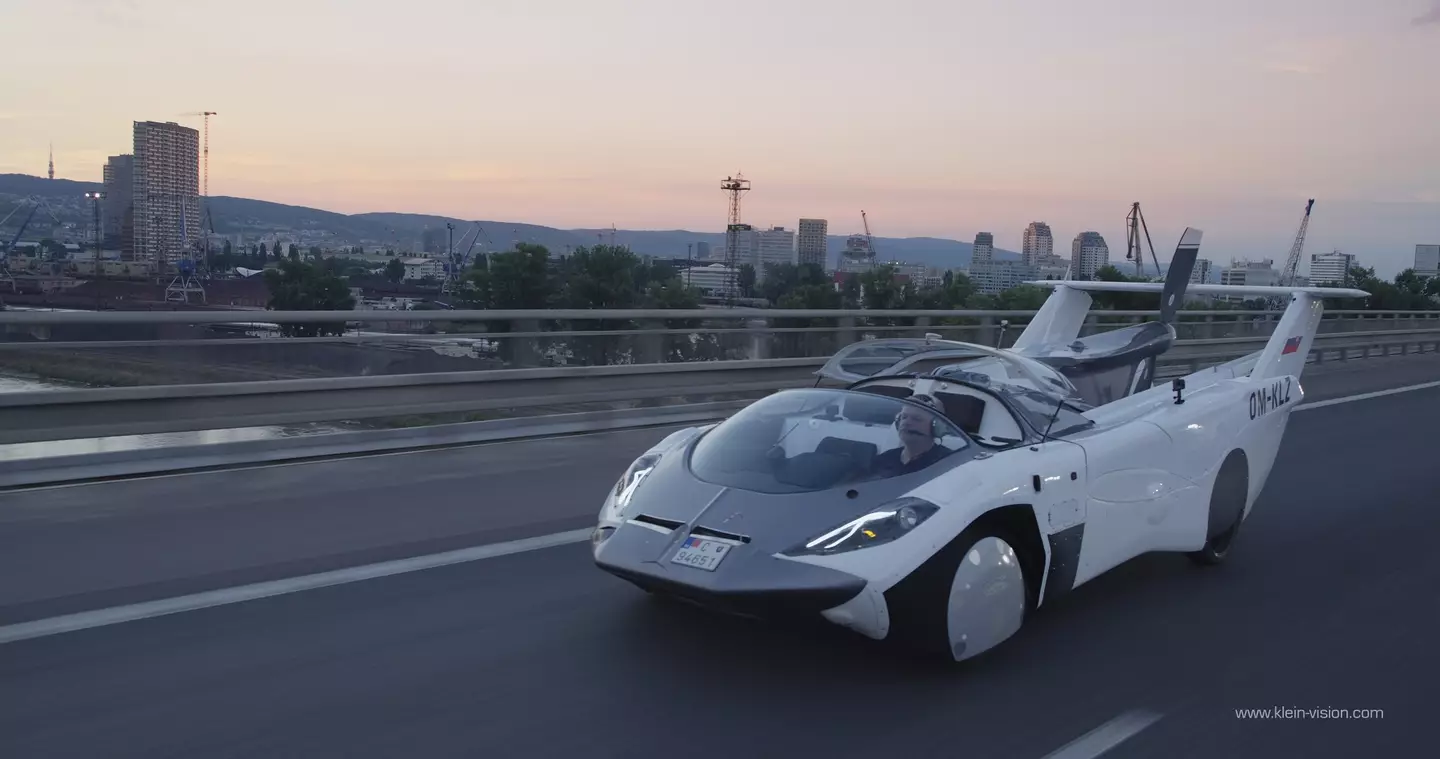
Of those 220,000 small plane owners in the United States, Zajac thinks at least 5% would be interested in buying a flying car, though he stresses he will be first in line when the AirCar hits the market.
The current AirCar prototype runs on a petrol powered BMW engine, with a range of about 1,000 kmh and a maximum speed of 186mph. That’s enough to travel from London to Paris, but Zajac and Klein say the new prototype they’re working on will be equipped with an engine that should double the speed and increase the range, meaning AirCar could soon ‘fly across the Atlantic.’
Zajac says that the company envisions cornering a gap in the market for mid-distances flights within that 1,000kmh range, pointing out that in recent years airlines like British Airways have been cutting back on the number of short-haul routes they run.
There are a few key differences between AirCar and its rivals in development on the other side of the Atlantic.
Most notably, rather than the helicopter-style eVTOL (electric vertical take-off and landing) vehicles favoured by the likes of Alphabet, AirCar requires 250 metres of open surface - be that a runway, a road or a field - to take off, taking just 2 minutes and 30 seconds to transform from road to air mode and vice versa.
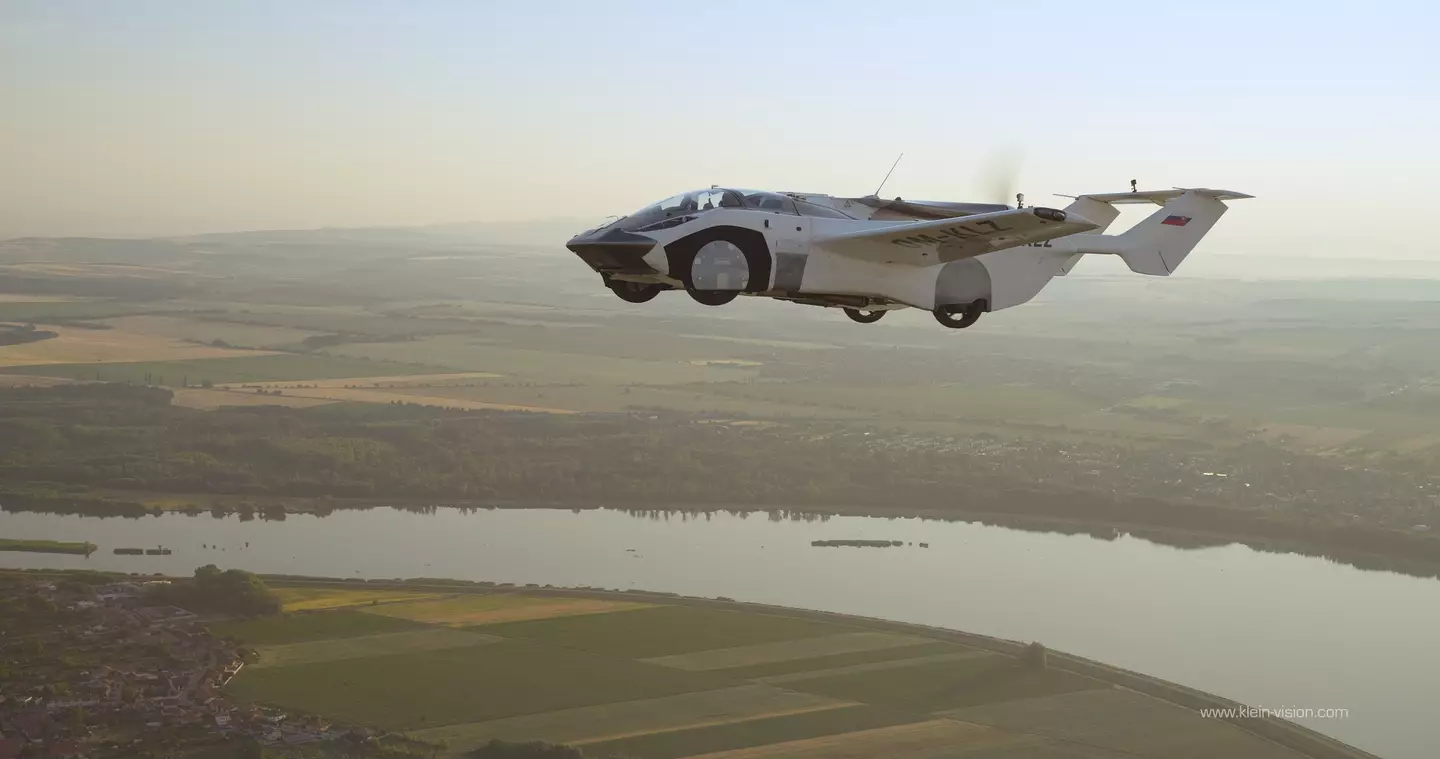
The vehicle also uses a petrol powered engine, which the ‘engine agnostic’ Zajac says is down to the lack of range offered by currently available electric batteries.
Over the past year or so, every new milestone reached by AirCar has been met with an avalanche of articles, as well as a fair share of cynics questioning whether the flying car will ever truly become a mainstream method of transport.
‘This is not a concept on a computer screen or a simulation,’ Zajac stresses when asked why his car differs from the rest. ‘There are many companies valued billions and what they have is a computer simulation. This is a real flying car.’
With Klein Vision’s prototype having gone from something its founder dreamed up as a child to perhaps the most advanced flying car we’ve seen yet, whose to say AirCar won't be zooming across a patch of sky near you very soon?
If you have a story you want to tell, send it to UNILAD via [email protected]
Topics: Technology, World News
